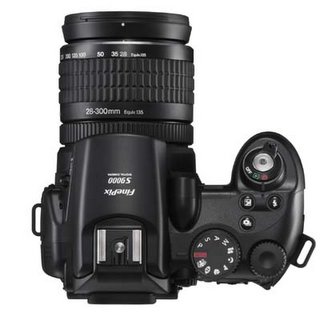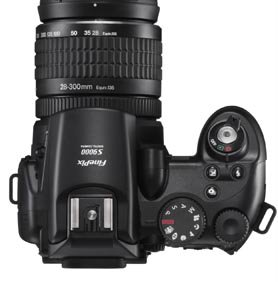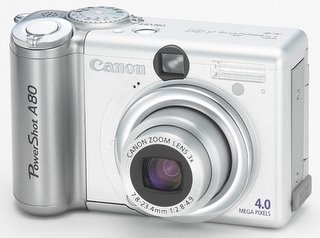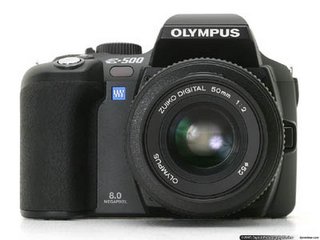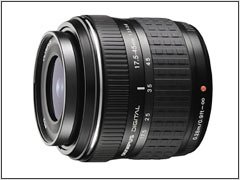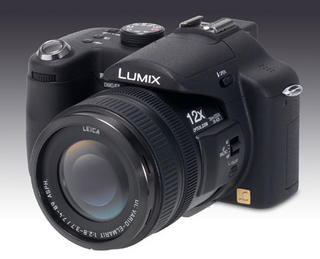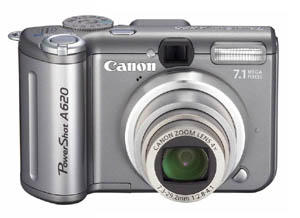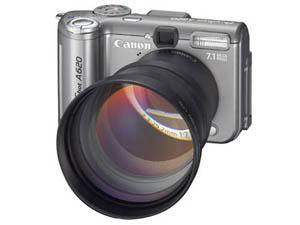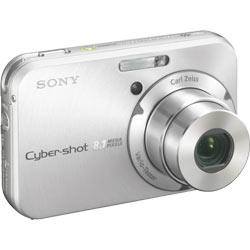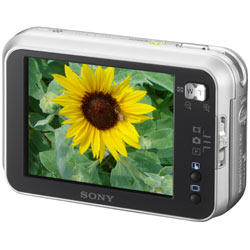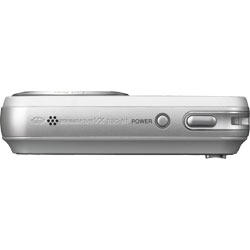Canon PowerShot SD550
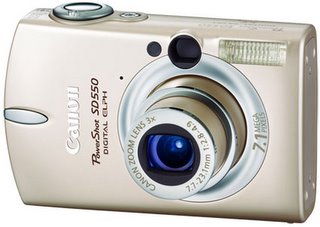 Cnet Reviews Canon PowerShot SD550 digital camera and says:
Cnet Reviews Canon PowerShot SD550 digital camera and says:Design
Just to get it out there: as far as we're concerned, this should be the way point-and-shoot cameras look and feel for the foreseeable future. In other words, forget about Sony's form-over-function DSC-T1 and its many stylistic imitators. We love the Canon PowerShot SD550's external design; it's small without being unwieldy, feels solid without being heavy (the camera weighs 6.7 ounces with battery and media installed), and is, overall, a joy to hold and shoot. Though prone to the occasional scratch, its silver-metallic exterior is a marked aesthetic improvement over the more plastic-looking SD300 and SD400.
In practice, the SD550 is small enough to fit in your pants pocket without looking like you've sprouted a renegade thigh but substantial enough that you can shoot without worrying that your fingers will block the lens, the flash, or the optical viewfinder. And on that subject: After increasing the LCD to 2.5 inches, Canon had to shrink the optical viewfinder we liked so much in the SD500. Though small, it still gives you decent coverage, allowing you to see close to 90 percent of your shot. In a camera this size, that's an achievement--not to take anything away from the SD550's LCD screen, which is bright and clearly visible both indoors and out. In some cases, you'll have to zoom in a bit to ensure your picture doesn't blur, but otherwise, we didn't miss the larger screens found on some competing cameras.
All of the SD550's rear controls are located to the right of the LCD screen, well within the reach of your thumb. Canon made the intelligent decision to place the camera's four-way selector and function button at the center of its rear control area. The function menu itself remains largely unchanged, granting easy access to such settings as white balance, ISO sensitivity, exposure compensation, image size, and compression level. There are also three separate rear buttons: one to toggle the LCD on and off, another to bring up the camera's setup menu, and a third to enable direct printer connectivity. The rear dial lets you choose from Review, Automatic Exposure, Manual Exposure, Scene, and Movie modes. The dial itself is responsive, and once we got used to the camera, it was easy to switch from mode to mode simply by remembering how many clicks it took to get from one to the other.
Features
Here's an important question to ask yourself before you read any further: do you want your next digital camera to have manual features, such as shutter- and aperture-priority modes? If your answer is yes, then the Canon PowerShot SD550 is not the camera for you. The SD550's Digic II image-processing system is capable of some impressive things, but in this camera, control over your exposure settings is not one of them.
Now, you might not want or need to bother with manual photography, or you might already have a digital SLR in your photographic arsenal and are looking for a pocket snapshot camera for more discreet shooting. To the SD550's credit, though we're used to tweaking the exposure settings, after a while we didn't even notice that the SD500 lacked them. Admittedly, these weren't high-pressure artistic situations, and the camera is somewhat prone to blurring shots when your arms aren't perfectly still, but it's worth noting that, by and large, the SD550 managed to overcome our initial, manual-born skepticism.
The SD550 sports a 3X optical zoom lens with a 37mm-to-111mm (35mm equivalent) focal-length range. The 37mm widest-angle focal length is still somewhat narrow, though not uncommonly so for a pocket camera. The lens aperture can range from f/2.8 to f/4.9, but due to the camera's lack of manual controls, the aperture setting you get from shot to shot will be determined by the camera. There's no manual focus, which can be a problem if you're having trouble with blurred shots or want to have tighter control over your focus in the SD550's otherwise effective macro mode. Movie clips are available in VGA (640x480) resolutions at 30fps, with durations limited only by the capacity of your media. One novel feature offered by Digic II is the 320x240 video setting that captures clips at a brisk 60fps, useful for anyone who wants to take a frame-by-frame look at their golf or baseball swings.
A few largely superfluous shooting functions lie buried in the SD550's function menu. There's a Digital Macro mode--a digital zoom, really--for more closely composing your close-ups in-camera, as well as a My Colors mode that simulates a variety of color filters. There are also nine preset scene modes available on the Scene dial setting, ranging from such standards as Portrait and Indoor to more specialized choices as Underwater and Fireworks. The camera's maximum photo resolution comes in at 3,072x2,304, stepping all the way down to a Web-friendly 640x480; if you're looking for wider in-camera composition, it also offers a 1,600x1,200 Postcard setting.
Performance
Looking at the Canon PowerShot SD550's performance scores, it's clear that the company's Digic II processor has a lot to offer, though there's also room for improvement. The SD550 remains one of the champions of point-and-shoot-camera start-up time, going from power-on to first shot in a mere 1.6 seconds. The SD550 also posted some decent scores in the shutter-lag department, logging a delay of 0.7 second under optimal light and 0.8 second under dim conditions. With the flash disabled, shot-to-shot times averaged a little less than 2 seconds, placing it in the top third of compact snapshot cameras; enabling the flash slowed things down significantly, upping the time to a more middling 3.4 seconds. The camera's burst mode captured 10 full-resolution shots before flagging at a pace of 2fps, while dropping the resolution and upping the compression increased the number of shots we could snap to somewhere beyond 50 but slowed down to to 1.8fps.
The SD550's proprietary lithium-ion battery performed very well, giving the camera enough power to get through nearly 1,300 shots before it sputtered and died. There are six stops along the camera's 3X optical-zoom range; since there's no onscreen indicator of where you are along the continuum, you'll either have to guess or zoom all the way out to orient yourself. Zooming action is a bit noisy, but unless you're engaging in some serious covert ops, the sound won't impede the camera's overall functionality.
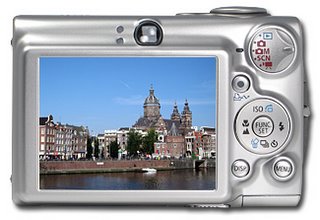 DCRP Review, Reviews Canon PowerShot SD550 digital camera and says:
DCRP Review, Reviews Canon PowerShot SD550 digital camera and says:The PowerShot SD550 (also known as the IXUS 750) is a compact (but not tiny) and very stylish metal camera. Its perpetual curve design and large LCD display will catch the eyes of those around you. That large LCD display (2.5") is one of the new features on the camera, and while it's big in size, the resolution could be better. One nice thing about it is that it works very well in low light situations, unlike most screens. And, unlike most of the competition, Canon has managed to keep an optical viewfinder on the camera. The SD550 has a pretty standard 3X zoom lens, and it doesn't support any conversion lenses, nor would I expect it to.
The SD550 packs quite a few features in its compact body, though it's a bit short on manual controls (the only ones are for white balance and slow shutter speeds). On the front of the camera you'll find a very powerful flash and an AF-assist lamp, which gives the camera good low light focusing performance. Inside the camera you'll find a snappy and easy-to-use interface with features like "My Colors", which lets you swap or highlight colors, among other things. Other features included an unlimited continuous shooting mode and the ability to record movies at 640 x 480 at 30 frames/second. The only problem with the movie mode is that the 1GB file size limit is reached in just eight minutes -- perhaps it's time for Canon to consider another codec so movies can be longer?
Camera performance is excellent in almost all areas. The camera starts up quickly and shoots and plays back your photos almost instantly. Autofocus speeds aren't as fast as, say, the Panasonic FX9, but it's still good. The SD550 supports the USB 2.0 High Speed standard, for fast transferring of photos to your Mac or PC. One area in which the camera falls short is in terms of battery life: while it's not terrible, the SD550 is quickly being passed by the competition.
Photo quality is very good on the SD550. Images are sharp, with accurate color and low purple fringing. Noise levels are a bit above average (given that this is a 7 Megapixel camera with a tiny sensor) and can be quite nasty at high ISOs. As is the case with most cameras, redeye is a problem on the SD550.
There really isn't much else to complain about. About the only thing I can come up with is the fact that you can't swap memory cards while the camera is on a tripod. Overall though, the SD550 is a heck of a compact point-and-shoot, and it gets my recommendation.
What I liked:
* Excellent photo quality (though see issues below)
* Compact and very stylish metal body
* Large 2.5" LCD display (though see issues below)
* Blazing performance
* Powerful flash for a compact camera
* Very good movie and continuous shooting modes
* Unique My Colors feature
* LCD visible in low light (and it's about time)
* AF-assist lamp; good low light focusing
* USB 2.0 High Speed support
* Optional underwater case and external slave flash
What I didn't care for:
* Some corner softness; noisy images at high ISO settings
* Redeye is a problem
* LCD resolution on the low side
* Can only record about 8 minutes of VGA video due to 1GB file size limit
* Battery life could be better
* Can't swap memory cards while camera is on a tripod
* More manual controls would be nice
Some other cameras in this class worth considering include the Canon PowerShot SD450 (thinner, 5MP version of the SD550), Casio Exilim EZ-Z750, Fuji FinePix F10 and Z1, HP Photosmart R817, Kodak EasyShare V550, Konica Minolta DiMAGE X1, NIkon Coolpix S3, Olympus Stylus 600 and 800, Pentax Optio S6, Samsung Digimax i5, and the Sony Cyber-shot DSC-T5.
As always, I recommend a trip down to your local reseller to try out the PowerShot SD550 and its competitors before you buy!
